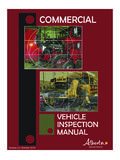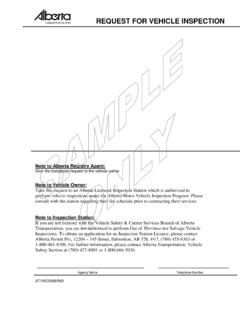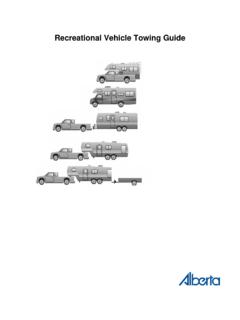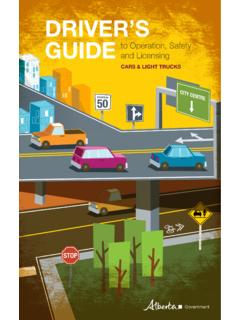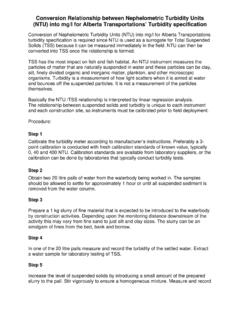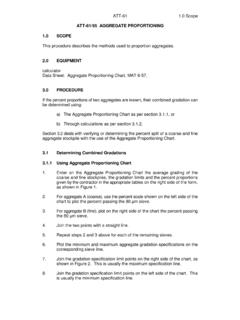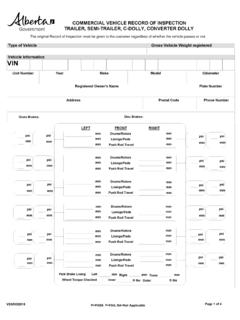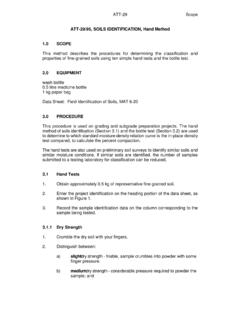Transcription of Rules & Regulations Applying to Small Vehicles
1 Updated July 2010 Rules & Regulations Applying to Small Vehicles Updated October 2017 2 Contents Introduction .. 3 Common Definitions .. 4 Quick Reference Guide .. 5 Motorcycle Helmets .. 6 Power Bicycles .. 7 Mopeds .. 9 Motorcycles .. 11 Mobility Aids .. 13 Off-highway Vehicles .. 15 Prohibited Miniature Vehicles .. 20 June2010 3 Introduction Operating a Small vehicle is a high risk activity. These Vehicles are lighter, less stable, and more vulnerable in a crash than other Vehicles on the road. New riders are at the greatest risk of having a collision because they are unfamiliar with the controls and handling characteristics of Small Vehicles . Even if you are an experienced automobile driver, when learning to ride a Small vehicle, be aware that you are once again a beginner.
2 Always ride with a safe attitude. Try to anticipate and avoid dangerous situations by riding safely. Being involved in a crash can mean a loss of income, health and possibly a life. This handbook is a good source in understanding the Rules and Regulations Applying to Small Vehicles . For other driver handbooks and to understand more about road safety and low risk driving pick up a Basic, Motorcycle and/or Professional Driver s Handbook at an Alberta Registry Agent office or on Although efforts have been made to reflect the current state of the legislation and Regulations at the time of its original publishing, this publication has no legislative sanction and is not intended to take the place of the Traffic Safety Act and Regulations or other legislation from which in part it is derived.
3 The user is encouraged to refer to the source legislation at: for purposes of interpreting and Applying the law. Any reliance on the information contained herein is done so at the reader s sole risk. A message from Alberta Transportation October 2017 4 Common Definitions Important common definitions that may apply to more than one of the Vehicles listed in this guide: 1. Cycle cycle means a bicycle, power bicycle, motorcycle or moped. (Traffic Safety Act, Section 1) 2. Motorcycle motorcycle means a motor vehicle, other than a moped, that is mounted on 2 or 3 wheels and includes those motor Vehicles known in the automotive trade as motorcycles and scooters. (Traffic Safety Act, Section 1) 3. Motor vehicle motor vehicle means (i) a vehicle propelled by any power other than muscular power, or (ii) a moped, but does not include a bicycle, power bicycle, an aircraft, an implement of husbandry or a motor vehicle that runs only on rails.
4 (Traffic Safety Act, Section 1) 4. Vehicle vehicle , other than in Part 6, means a device in, on or by which a person or thing may be transported or drawn on a highway and includes a combination of Vehicles but does not include a mobility aid. (Traffic Safety Act, Section 1) 5. Highway highway means any thoroughfare, street, road, trail, avenue, parkway, driveway, viaduct, lane, alley, square, bridge, causeway, trestleway or other place or any part of any of them, whether publicly or privately owned, that the public is ordinarily entitled or permitted to use for the passage or parking of Vehicles and includes: i. A sidewalk, including a boulevard adjacent to the sidewalk ii. If a ditch lies adjacent to and parallel with the roadway, the ditch, and iii. If a highway right of way is contained between fences or between a fence and one side of the roadway, all the land between the fences, or all the land between the fence and the edge of the roadway as the case may be, but does not include a place declared by regulation not to be a highway.
5 (Traffic Safety Act, Section 1) 5 Quick Reference Guide Driver's Licence Required Minimum Driving Age Registration Required Insurance Required Helmet Required power bicycles NO 12 NO NO YES mopeds CLASS 7 14 YES YES YES motorcycles CLASS 6 16 YES YES YES mobility aids NO N/A NO NO NO off-highway Vehicles YES + NO 14 YES YES YES prohibited miniature Vehicles It is prohibited to operate these Vehicles on roadways or sidewalks. 6 Motorcycle Helmets Motorcycle helmets are worn by riders of: 1. Power Bicycles (A rider may also wear an approved bicycle helmet) 2. Mopeds 3. Motorcycles 4. Most Off-Highway Vehicles Approved Helmet Standards: Motorcycle Helmets must have the mark or label stating it meets one of the following standards: CSA, DOT (Standard 218), BSI, the applicable Snell Memorial Foundation standard, or the ECE.
6 The following are adopted and apply to safety helmets in accordance with subsection (1): a) CSA Standard CAN3-D230-M85; b) DOT Standard 218 under part of the code of Federal Regulations (United States), Title 49; c) British Standards Institute Standard BS 6658 1985; d) Snell Memorial Foundation Standard M2000; e) Snell Memorial Foundation Standard M2005; f) Snell Memorial Foundation 2010 Standard For Protective Headgear; g) United Nations Economic Commission for Europe Regulation 22-05. No person shall buy, sell or offer for sale a safety helmet intended for the use of operators or passengers of cycles, and off-highway Vehicles , unless it complies with the standard. To ensure your personal safety, maintain your helmet in good condition and replace it in accordance with its manufacturer s recommendations.
7 Note: New helmets are not being manufactured and certified to the CSA, BSI, and older Snell Memorial Foundation Standards. These standards are included as some older helmets may still be in use on Alberta s roadways. 7 Power Bicycles Definition according to: USE OF HIGHWAY AND Rules OF THE ROAD REGULATION 1(1)(o) power bicycle means a vehicle that is a power-assisted bicycle under the Motor Vehicle Safety Regulations (Canada) ( , c. 1038); Motor Vehicle Safety Regulations (Canada) ( , c. 1038): Interpretation 2.(1) "power-assisted bicycle" means a vehicle that: (a) has steering handlebars and is equipped with pedals, (b) is designed to travel on not more than three wheels in contact with the ground, (c) is capable of being propelled by muscular power, (d) has one or more electric motors that have, singly or in combination, the following characteristics.
8 (i) it has a total continuous power output rating, measured at the shaft of each motor, of 500 W or less, (ii) if it is engaged by the use of muscular power, power assistance immediately ceases when the muscular power ceases, (iii) if it is engaged by the use of an accelerator controller, power assistance immediately ceases when the brakes are applied, and (iv) it is incapable of providing further assistance when the bicycle attains a speed of 32 km/h on level ground, (e) bears a label that is permanently affixed by the manufacturer and appears in a conspicuous location stating, in both official languages, that the vehicle is a power-assisted bicycle as defined in this subsection, and (f) has one of the following safety features, (i) an enabling mechanism to turn the electric motor on and off that is separate from the accelerator controller and fitted in such a manner that it is operable by the driver, or (ii) a mechanism that prevents the motor from being engaged before the bicycle attains a speed of 3 km/h; 8 Operator s licence: You are not required to hold an operators licence when operating a power bicycle.
9 (Traffic Safety Act, Section 51(a) states licence required for motor Vehicles . Definition of motor vehicle in Traffic Safety Act, Section 1, excludes power bicycles.) Minimum driving age: The minimum driving age to operate a power bicycle is 12 years. You must also have written consent from a parent or legal guardian. (Operator Licensing and Vehicle Control Regulation. Parental consent in form approved by Registrar or holds a valid licence, Section 9) Registration: You are not required to obtain registration on power bicycles. (Traffic Safety Act, Section 52 (1)(a) states registration required for motor vehicle . Definition of motor vehicle excludes power bicycles.) Insurance: You are not required to obtain insurance for power bicycles. (Traffic Safety Act, Section 54(1)(a) states insurance required for motor vehicle.)
10 Definition of motor vehicle excludes power bicycles.) Helmet: You must wear either an approved motorcycle helmet (Vehicle Equipment Regulation, Section 108). Or, an approved bicycle helmet (Vehicle Equipment Regulation section 112 via Registrar s exemption dated August 25, 2017): Special laws: a) You must ride as far to the right side of a highway as practicable to the curb or edge of the roadway unless making a left hand turn. When riding on a one way street in an urban area you may operate as near as practicable to either curb or edge of the roadway. (Use of Highway and Rules of the Road Regulation, Section 77.) b) If you are under the age of 16 years, you are prohibited from carrying any passengers on a power bicycle. Equipment: You must be equipped with the following gear when riding a power bicycle: headlamp, tail lamp, brake lamp, reflectors, brakes, a horn, and mirror.
